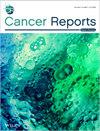Acetyl Salicylic Acid, COX-2 Inhibitors and Other NSAIDs and Breast Cancer Survival in a Finnish Population-Based Cohort
Abstract
Background
Non-steroidal anti-inflammatory drugs (NSAIDs), particularly acetylsalicylic acid (ASA), have been associated with reduced breast cancer (BCa) mortality. While overexpression of cyclooxygenase-2 (COX-2) correlates with poorer prognosis in BCa, COX-2 inhibitors (coxibs) have not demonstrated a survival advantage. However, the evidence remains conflicting and limited. We examined associations between BCa mortality and NSAID use in a Finnish population-based cohort.
Methods
The study cohort, 73 170 women with new BCa diagnosis during 1995–2013 was identified from The Finnish Cancer Registry. Follow-up data including date and the cause of death, NSAID purchases from 1995 to 2015, mammography screening participation and tumor hormone receptor status, were obtained from national registries. NSAID purchases were categorized into NSAIDs overall, ASA, and coxibs. BCa-specific and overall survival by NSAID use were analyzed using Cox proportional hazard regression, adjusted for age, tumor extent, primary treatment, Charlson comorbidity index, hypertension, diabetes, mammography participation, and hormonal therapy.
Results
Pre-diagnostic use of NSAIDs (HR 0.78, 95% CI: 0.75–0.81) and coxibs (HR 0.76, 95% CI: 0.71–0.81) was associated with reduced BCa mortality, while ASA showed no association. Post-diagnostic NSAID use was associated with increased BCa mortality (HR 1.27, 95% CI: 1.22–1.33), while ASA use (HR 0.84, 95% CI: 0.73–0.97) showed dose-dependent risk reduction.
Conclusion
Post-diagnostic use of ASA is associated with reduced BCa-specific mortality, distinguishing ASA from other NSAIDs. Clinical trials are required to determine the ideal ASA dose, frequency, and duration for treating BCa. Pre-diagnostic use of NSAIDs overall is associated with a slight reduction in BCa mortality without dose dependence. The potential role of pre-diagnostic NSAID use as a prognostic factor in BCa warrants further investigation.


 求助内容:
求助内容: 应助结果提醒方式:
应助结果提醒方式:


